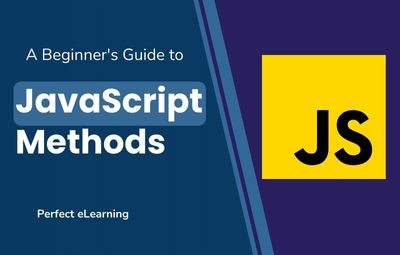

When developing new websites or web apps, the job can become complex at times. It reaches a point where simply having libraries is no longer sufficient. In the midst of code's chaos, structure and order are required. That is where Frameworks come into play.
Framework in the programming area is nothing but a group of
predefined classes and methods (functions) that can be used to process input, manage hardware devices, and interact with system software.
As you know web development is constantly changing, and it is very necessary to know in which direction these changes are going. That is why there is a need to stay updated with the latest frameworks or trends in general.
Frameworks have become an essential part of web development, they provide a structure in which software developers can build programs for a specific platform.. They are used for easier, faster, and better development of websites or web applications. This streamlines the development process since programmers don’t need to reinvent the wheel each time they develop a new application.
These are the few reasons why using frameworks are recommended by thousands of developers around the world.
A framework, for the most part, adheres to the MVC pattern, which helps in structuring the code-base and separates an application's concerns into three parts: Model, View, and Controller.
As the number of Web Frameworks is increasing gradually. We will discuss some of the best web development frameworks in 2021.
1. Angular.JS
Google's Angular JS is an open-source JavaScript framework for developing web applications.The use of MVC (Model View Control) is one of the unique features of this framework. It is used for Frontend Development, Single Page Applications(SPA), etc.
Here are few features of Angular.JS:
Easy to implement with:
All you need to know is the basics of HTML, CSS, and JavaScript to work with AngularJs. You do not necessarily need to be an expert in these technologies.
Time-saving:
AngularJs allows us to work with components and reuse them later, saving us time and code.
Ready to use the template:
AngularJs is mostly plain HTML, and it mostly uses the plain HTML template, which it passes to the DOM and then to the AngularJS compiler. It passes through the templates and then they are ready to use.
2. Laravel
Laravel is a web application framework that eases some of the commonly executed tasks like routing, authentication, sessions, caching, and others so that developers can focus on building business-related features of the app.
It also helps in eliminating all the problematic areas associated with handling complex PHP code and provides a full-stack solution for both back-end and front-end developers.
Here are few features of Laravel:
Faster Time-To-Market:
For handling common tasks, the PHP framework Laravel works on a modular basis.
There are many pre-built functions and structures in Laravel that work on the most recent PHP principles to build responsive web applications in a timely manner.
Better Authentication and Authorization Option:
It is very simple and easy to implement a complete authentication system.
Login, Registration, and Password Reset- for example. And Laravel does all this with the help of a single command. It also makes it simple to organise authorization logic and control application access.
MVC Architecture:
Based on MVC, the framework provides many features like high performance, increased security, and scalability.
Multi-language support:
You can easily add any language to the already existing translations in the Laravel-lang package.
3. React.js
React is the most widely used front-end JavaScript library in web development. React has many advantages over other frameworks, making it a better choice. It is used to create complex front-end solutions. It is used by both established companies as well as start-ups.
React is based on the concept of dividing the user interface into separate self-contained parts - components that are fairly simple to maintain and expand. You can even create separate components and use them in different projects, easily transferring them from one to the other.
Here are few features of React.JS:
Easy creation of dynamic applications:
In comparison to JavaScript, where coding often becomes complex very quickly, React makes it easier to create dynamic web applications because it requires less coding and provides more functionality.
Reusable components:
Components are the building block of any React application, and a single app is typically made up of several components.These components have their own logic and controls, and they can be reused throughout the application, reducing development time significantly.
Used in the development of both web and mobile apps:
We already know that React is used to create web applications, but it can also be used to create mobile apps.There is a framework called React Native, obtained from React.js itself, that is vastly popular and is used for building fine-looking mobile applications. So, in actuality, React.js can be applied for building both web and mobile applications.
Enhanced performance:
React makes use of Virtual DOM to create web applications more quickly. The Virtual DOM compares the previous states of the components and updates only the items in the Real DOM that have changed, rather than updating all of the components again, as traditional web applications do.
4.ASP.NET MVC
ASP.NET MVC is Microsoft’s web application development technology framework based on the origin of the separation of interests. Prior to the MVC pattern, Web Forms was the primary Microsoft technology for developing web applications.
The ASP.NET MVC platform is a framework designed to create websites and web applications applying the MVC design (Models, Views, and Controllers). Coders enjoy this technology because of its simplicity, flexibility, and widespread application.
Here are few features of ASP.NET MVC:
- It reduces all the issues that come up while building a web application like speed, cost, and language.
- It provides a platform that allows writing a code in a text editor program and Visual Studio .NET
- It provides multiple development modes, which help to develop applications in an easy and better way.
- It works on an HTTP protocol and uses HTTP commands.
5. Django
Django is a Python web application framework. It is a DevOps-compatible, DRY & KISS-compliant REST framework that allows you to create a full-fledged API with just a few lines of code. It has excellent documentation and community support that makes it a developers' favorite.
Here are few features of Django:
Speed: It was designed to help web developers create an app in the shortest time possible, which helps in meeting deadlines early.
The whole package: It works using dozens of additional features, which help a lot with user authentication, website maps, content administration, RSS, and much more.
Protection: It protects against security errors that may compromise the project.
Scalability: It’s a good choice to work on projects aimed at high-level website traffic.
Let’s Summarize
Each of these frameworks is good in its own way, but the final decision of choosing the right framework is made according to the project requirement. So always pick frameworks wisely.
You’ll find many similarities between these frameworks while practicing with each one.
In this blog, we have named the best frameworks according to the statistics, but there are many other frameworks that may better suit your company’s needs or project requirements.
Perfect eLearning offers basic & advanced coding tutorials for people who want to learn how to code.
Topics:
1. Introducing the best basic coding courses online.
2. The benefits of taking coding courses online.
3. The top three coding courses online that you should check out.
4. How to get started with coding courses online.
5. The best way to learn to code online.
6. The future of coding courses online.
7. Introducing the basics of coding
8. The benefits of learning to code
9. Types of coding tutorials available
10. How to get started with coding
If you're looking to learn to code, there are a variety of ways you can go about it. But, if you're looking for the easiest and most efficient way to learn, then these 5 steps are the way to go:
1. Choose the right language.
2. Use coding boot camps.
3. Use online coding communities.
4. Use online coding tutorials.
5. Use online coding examples.
For more details, you can talk to our experts.
Perfect eLearning
Learn & Grow!


